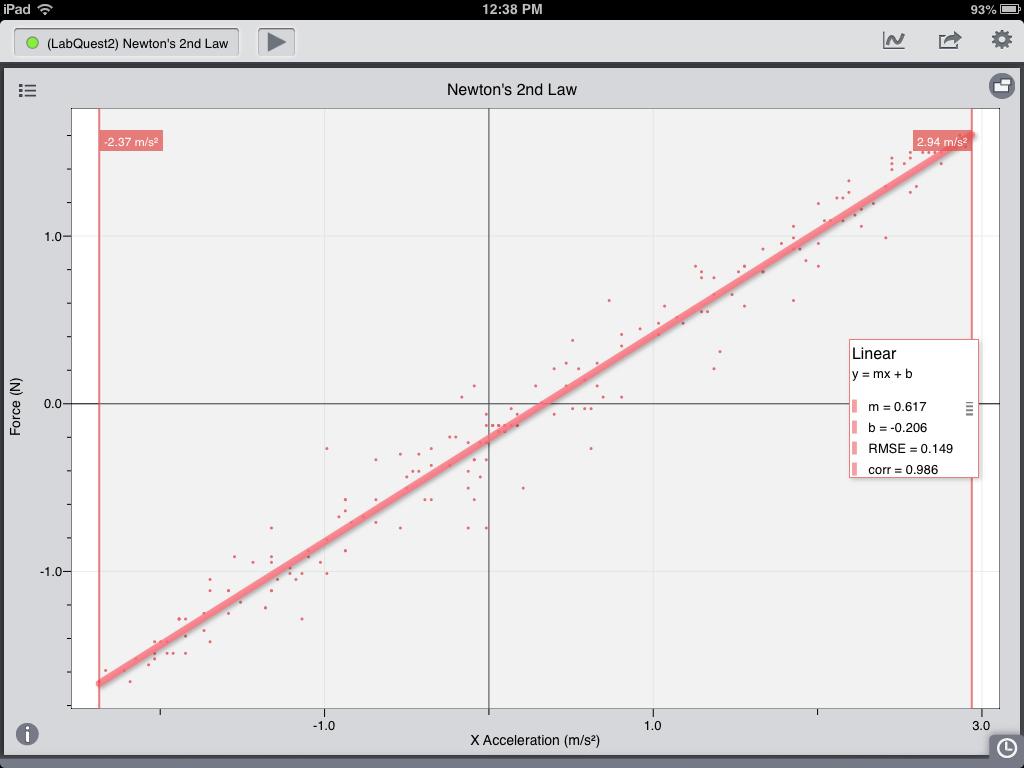Jesuit High School in Portland, OR, investigated ways to use technology to engage students across the curriculum and to introduce personalized learning at a low cost. After evaluating the available technologies, physics teacher, Jennifer Cournia, chose the Connected Science System® for use in her honors physics class. Using LabQuest 2 and the school’s existing sensors, each lab group was able to work together on an experiment while wirelessly streaming data to Graphical Analysis on the iPad.
In the investigation “Newton’s Second Law” from Physics with Vernier, students mounted a Low-g Accelerometer and Dual-Range Force Sensor to a Vernier Dynamics cart. As students pushed and pulled the cart on the track, the force applied and the resulting acceleration data were recorded. The data were wirelessly streamed over the school’s Wi-Fi network from LabQuest 2 to the Graphical Analysis app, where they completed their analysis individually.
Students investigated the force vs. time and acceleration vs. time graphs in Graphical Analysis and immediately noticed a relationship: data points with a large positive force also had a large positive acceleration. A large negative force yielded a large negative acceleration.
To investigate the relationship between force and acceleration, students made predictions about the shape of a force vs. acceleration graph. Next, each student set up the axes of that graph in Graphical Analysis and applied a linear fit. Students discovered that the slope, or force per acceleration, corresponded to the combined mass of the cart and sensors.

To finish up the lab, students used the export function in Graphical Analysis to submit their graphs to a course management app, where Ms. Cournia had the tools to review, grade, and comment on students’ work.
As students’ comfort with using the iPad and lab equipment grows, Ms. Cournia hopes to gather increasingly valuable insights on student understanding. Students will annotate their graphs, combine it with their lab reports in Pages®, and submit it instantly for assessment. Ms. Cournia will be able to gauge student understanding, as it develops, and adjust her instruction accordingly. The combination of mobile technology with LabQuest 2 and Vernier probeware provides new opportunities for student engagement.
